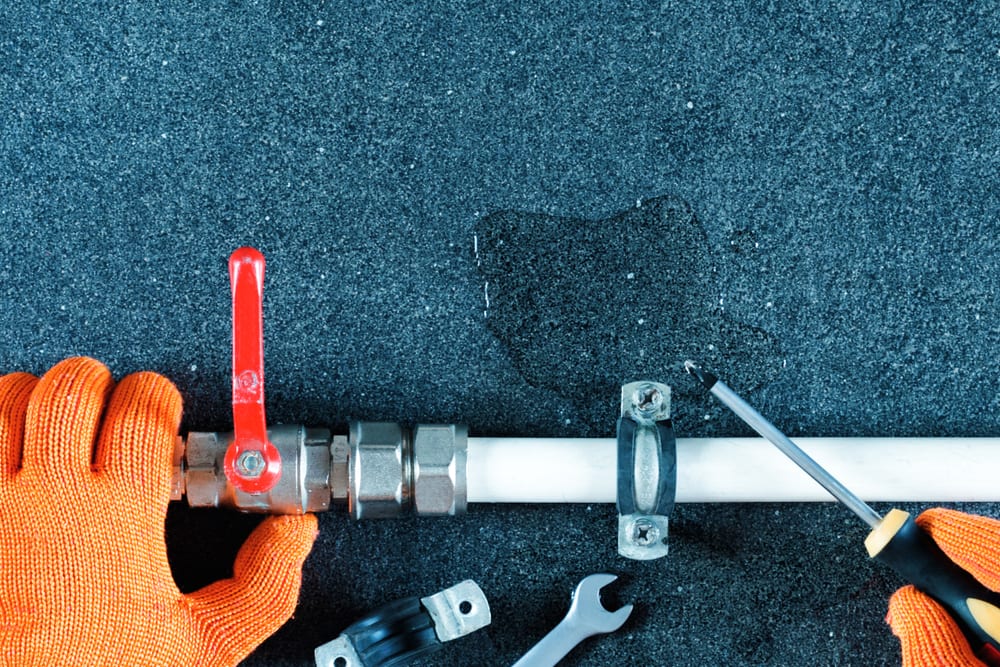Overview To Water Leakage Detection At Home
Overview To Water Leakage Detection At Home
Blog Article
We have discovered this article about Finding hidden leaks directly below on the net and figured it made good sense to share it with you on my blog.

Early discovery of leaking water lines can minimize a prospective disaster. Some little water leakages might not be visible.
1. Check Out the Water Meter
Every home has a water meter. Examining it is a guaranteed way that assists you discover leakages. For starters, switch off all the water resources. Guarantee no one will purge, use the tap, shower, run the washing maker or dish washer. From there, go to the meter as well as watch if it will certainly transform. Since no one is using it, there ought to be no motions. If it relocates, that shows a fast-moving leakage. If you detect no changes, wait an hour or two and also examine back once more. This means you might have a slow leakage that might even be underground.
2. Inspect Water Consumption
If you find sudden modifications, despite your usage being the very same, it means that you have leakages in your plumbing system. An abrupt spike in your bill suggests a fast-moving leakage.
Meanwhile, a constant increase monthly, despite the very same behaviors, shows you have a slow leak that's likewise gradually intensifying. Call a plumber to extensively inspect your property, especially if you really feel a cozy location on your floor with piping below.
3. Do a Food Coloring Examination
When it pertains to water consumption, 30% originates from bathrooms. Examination to see if they are running correctly. Decrease flecks of food color in the tank as well as wait 10 minutes. If the shade somehow infiltrates your dish throughout that time without flushing, there's a leak in between the tank as well as dish.
4. Asses Outside Lines
Do not forget to examine your exterior water lines as well. Must water seep out of the connection, you have a loose rubber gasket. One small leakage can squander tons of water as well as increase your water costs.
5. Analyze the situation and also check
Homeowners ought to make it a behavior to check under the sink counters as well as also inside closets for any bad odor or mold and mildew development. These 2 warnings indicate a leak so timely interest is needed. Doing regular inspections, even bi-annually, can save you from a major problem.
If you know your home is currently old, maintain a careful eye on your heating systems, pipes, pipelines etc. Check for discolorations and compromising as a lot of devices and also pipes have a life expectancy. They will certainly additionally normally degrade as a result of tear as well as use. If you suspect dripping water lines in your plumbing system, don't await it to escalate. Call an expert plumber immediately so you do not wind up with an awful mess in your house.
Early detection of dripping water lines can alleviate a possible calamity. Some little water leakages might not be visible. Inspecting it is a guaranteed way that helps you discover leakages. One small leak can squander heaps of water and also increase your water expense.
If you think dripping water lines in your plumbing system, do not wait for it to escalate.
WARNING SIGNS OF WATER LEAKAGE BEHIND THE WALL
PERSISTENT MUSTY ODORS
As water slowly drips from a leaky pipe inside the wall, flooring and sheetrock stay damp and develop an odor similar to wet cardboard. It generates a musty smell that can help you find hidden leaks.
MOLD IN UNUSUAL AREAS
Mold usually grows in wet areas like kitchens, baths and laundry rooms. If you spot the stuff on walls or baseboards in other rooms of the house, it’s a good indicator of undetected water leaks.
STAINS THAT GROW
When mold thrives around a leaky pipe, it sometimes takes hold on the inside surface of the affected wall. A growing stain on otherwise clean sheetrock is often your sign of a hidden plumbing problem.
PEELING OR BUBBLING WALLPAPER / PAINT
This clue is easy to miss in rooms that don’t get much use. When you see wallpaper separating along seams or paint bubbling or flaking off the wall, blame sheetrock that stays wet because of an undetected leak.
BUCKLED CEILINGS AND STAINED FLOORS
If ceilings or floors in bathrooms, kitchens or laundry areas develop structural problems, don’t rule out constant damp inside the walls. Wet sheetrock can affect adjacent framing, flooring and ceilings.
https://www.servicemasterbyzaba.com/blog/how-to-detect-water-leakage-in-walls/

I ran across that piece on Hacks to detect leaks while doing a lookup on the web. Kindly take the time to promote this post if you liked it. Thank-you for going through it.
Report this page